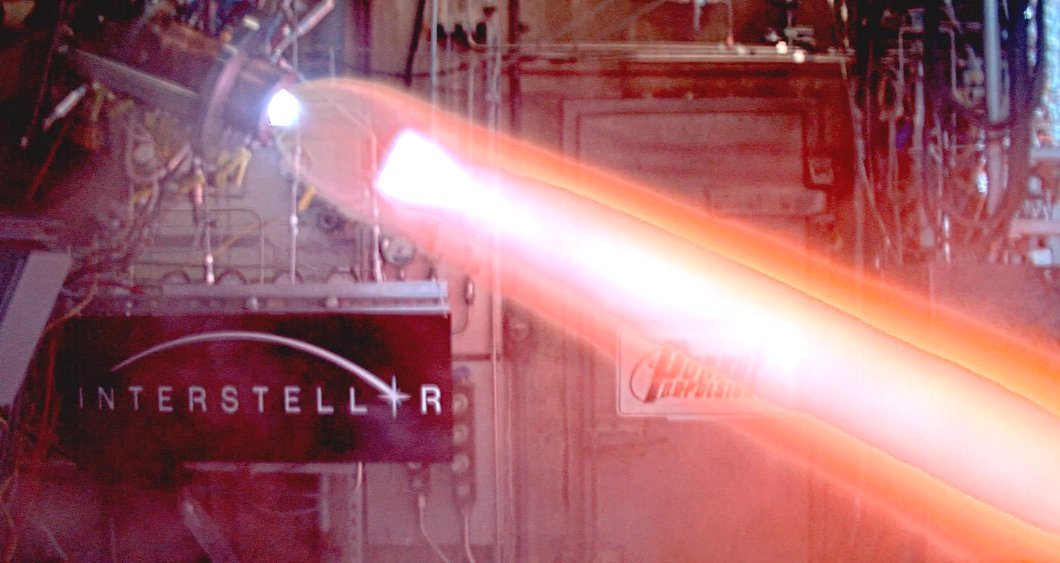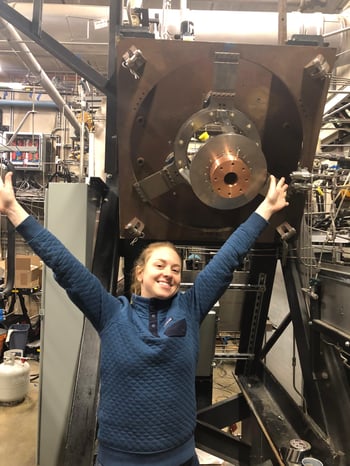 Emma is a senior aerospace engineer who is passionate about bringing humanity to space within our lifetime. She specializes in propulsion design and has designed injectors for SpaceX and Stratolaunch. She enjoys unique research expeditions and has worked at two remote research stations - one in Antarctica and one simulating a Martian habitat. This is Emma with her first ever printed part – a microthruster injector for Pioneer Astronautics in 2017, printed with the LPBF process.
Emma is a senior aerospace engineer who is passionate about bringing humanity to space within our lifetime. She specializes in propulsion design and has designed injectors for SpaceX and Stratolaunch. She enjoys unique research expeditions and has worked at two remote research stations - one in Antarctica and one simulating a Martian habitat. This is Emma with her first ever printed part – a microthruster injector for Pioneer Astronautics in 2017, printed with the LPBF process.
- Emma, please tell us about yourself
I’m a senior propulsion engineer working at Interstellar Technologies. We’re an up-and-coming company that is developing new innovative propulsion technology for human space travel within our solar system. Prior to Interstellar, I worked as the main injector lead for Paul Allen’s Stratolaunch, at Pioneer Astronautics, and at SpaceX. As an engineer, I specialize in liquid propellant injector design. The injector is a critical part of the rocket engine, as it controls how and when the propellants mix together within the combustion chamber. I particularly enjoy the artistic and creative nature of injector design. The fluid engineer can design for an infinite variety of spray patterns and droplet collisions, all in the name of high performance and stability. Outside of work, I enjoy learning languages and traveling on sailing expeditions.
- How did you get involved with metal additive manufacturing (AM)?
I first started using metal AM in 2015 at Pioneer Astronautics, when I suggested the idea of printing a metal micro-thruster injector. We had very little material space with that design, and we realized that AM could print internal channels weaving within each other that would be impossible for standard machining. That was a game changer for me as a designer, and I’ve never looked back. After that project, I started working for Stratolaunch, and the goal was to achieve a 100% additive engine. Every part I created for two years was for metal AM, and I learned a completely new way of engineering design. I’ve taken that knowledge to Interstellar, where AM manufacturing is the design standard.

Photo directly after Interstellar installed the fuel injector onto Purdue University’s rocket test stand
- What are you most impressed with when it comes to AM?
I am continually impressed by the limitless possibilities that come with AM. Even after five years of designing for additive manufacturing, I am still finding new ways to push the envelope with this technology. As a designer, you’re used to being limited by tool access, seal locations, and the final configuration would be made up of hundreds of parts. With AM, if you can think of it, you can find a way to print it, and the final configuration may just be one part. No engineer will ever go back to designing for a machined part once they complete their first printed piece of hardware.
- What are the biggest challenges the AM industry faces?
The AM industry is rapidly evolving, with new technology coming out every year. Because of this, there is not a standard and complete source of material properties for designers to use. You rely on the manufacturer’s public material data, which often does not include all critical design properties, nor will it replicate your intended design environment. Each customer can complete their own set of testing, but this can be both time-consuming and costly.
- What’s your perspective on how to address them?
AM printing companies can work together with their customers to develop an in-depth map of material properties at a variety of conditions. Ideally, they would be able to agree that the testing results would be available for all customers and over time build a true database of material properties.
- What do you predict to be the top AM trends for this year and beyond?
I predict the AM industry to continue expanding its selection of powder materials and reducing its printing restrictions. I am most excited for the ability to print at shallow angles without supports, which would allow engineers to design for increased flow efficiency, less mechanical weight, and higher combustion performance. This would also reduce post-processing and machining time, leading to faster prototyping, rapid testing, and more industry innovation.

A snapshot of the Interstellar hot fire test with Emma’s printed injector design
Emma recently designed a monolithic rocket injector which will be used in Interstellar’s Phoenix liquid propulsion engine. The injector highlights Velo3D’s SupportFree capabilities and boasts 5% higher combustion efficiency over an industry standard printed injector. Learn more about that case study by watching the webinar replay here.




